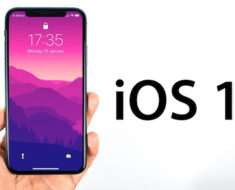Recently, AMD posted a blog and companion video about freedom of choice. The company proclaimed its technologies are designed to move the industry forward. Nothing in the blog post or video talked about Nvidia or its GeForce Partner Program. However, everything mentioned by AMD puts Nvidia in the crosshairs. Nobody should be surprised about the shots lobbed at Nvidia, and AMD makes valid points here.
The GeForce Partner Program
Various reports have detailed the GeForce Partner Program. By joining this program, GPU manufacturers receive marketing assistance and other benefits from Nvidia. Membership in this program includes granting exclusive rights to Nvidia as the “gaming” brand in one’s GPU lineup. This essentially means designating Nvidia as superior to AMD in exchange for benefits, which has unsurprisingly been called anticompetitive.
One such example of the GPP involves Asus and its recent announcement. The company revealed its new AREZ brand of GPUs, populated with AMD graphics cards. When it comes to Asus, ROG is the company’s top-tier gaming brand of GPUs and hardware. Such a move is the precursor to Asus moving ROG into the GeForce Partner Program. Without a doubt, Nvidia would call this move a victory for consumer education and protection.
AMD Doesn’t See Things In The Same Light
On the other hand, AMD wouldn’t agree with Nvidia’s view on its GPP and other practices. The blog post from AMD hyped its own Freesync and Vulkan developments while criticizing unnamed alternatives. Few people would disagree on this point as it relates to Nvidia’s G-Sync technology, which drives up the prices on PC hardware. Although AMD prides itself as a champion of consumers, it’s still trying to turn a profit.
The GPP very well may be anticompetitive and a blow to consumers. Nvidia’s practices and policies are also a blow to AMD itself. In the long run, AMD stands to lose a significant amount of business and money to the GPP. Many consumers opt to buy the “gaming” brand of popular GPU manufacturers rather than other offerings after all. The entire situation could be seen as both anticompetitive and bad for AMD, though.
Not all manufacturers have jumped onboard the GeForce Partner Program so far. Big names that have done so include MSI and Gigabyte. As previously mentioned, Asus shouldn’t be too far behind these companies. The GPP won’t disappear anytime soon, and AMD will need to respond in some manner in order to survive.
Dil Bole Oberoi




